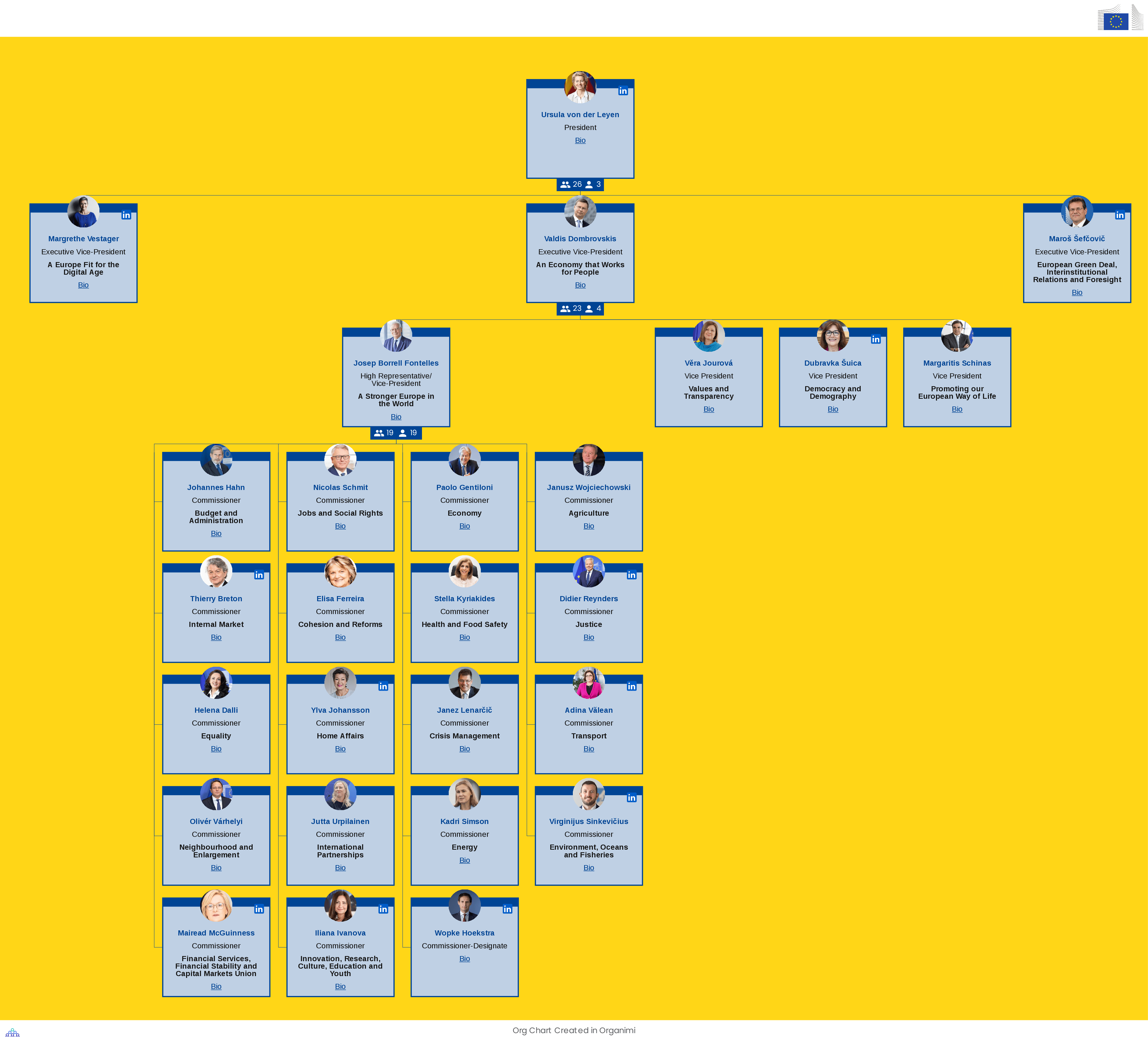European Commission’s Organizational Structure
Create this exact chart in Organimi! Scroll below to see how.
Introduction
The European Commission (EC) is the executive branch of the European Union (EU). It serves as the EU’s administrative and policy-making body, responsible for implementing decisions, managing EU policies, and proposing legislation.
The Commission is headquartered in Brussels, Belgium, and operates with a diverse and international staff of around 32,000 European civil servants. These individuals play critical roles in formulating and implementing EU policies across a broad spectrum of areas, from trade and competition to environmental protection and humanitarian aid.
The EC plays a pivotal role in ensuring the EU’s cohesion and cooperation among its 27 Member States. It essentially functions as the guardian of EU treaties, monitoring compliance and addressing violations, while also working to create a unified, prosperous, and inclusive European community.
The College of Commissioners
The European Commission itself is composed of and led by the College of Commissioners, which is appointed every five years, and led by a President.
Each of the EU’s 27 Member States sends one Commissioner and together, the 27 Commissioners work to shape the EU’s overall strategy, propose new laws and policies, and manage the EU budget. They also play a significant role in supporting international development and delivering aid.

European Commission’s Organizational Structure
The European Commission’s organizational structure can be characterized as a complex and hierarchical bureaucracy. This structure is primarily designed to manage the various functions and responsibilities of the EC as the executive branch of the European Union.
Ultimately, the EC is divided into different departments known as Directorates-General (DGs) that are similar in their function to government departments or ministries such as agriculture, competition, and environment. Each DG is led by a Director-General who reports back to one of the 27 Commissioners.
Within each DG, there are departments and units that focus on particular issues or tasks. These smaller units are responsible for implementing policies, conducting research, and carrying out administrative functions. It is within these individual departments and units where the EC’s 32,000-strong army of civil servants help to execute their department’s policies and initiatives as established by the College of Commissioners.
The hierarchical nature of the European Commission’s structure ensures that policies and decisions are made at different levels, from the President and Commissioners down to the civil servants who implement these policies. This structure enables the Commission to address a wide range of complex policy issues and manage the diverse functions of the EU effectively.
Want to learn more about hierarchical and other organizational structures and their role in the business world? Here are some helpful blog resources that you can get started with:
Create this chart in Organimi!
You can download the CSV file of European Commission’s org structure, import it into Organimi and start editing this chart right away! Here’s how:
- From your dashboard, select Data Import.
- Click the CSV tile.
- Click +Upload Your File.
- Select an Excel file from your device.
- In the Organization field, click the down arrow to select an organization.
- Click Create a New Chart
- Click Next and select: Organization Chart
- Select the auto-build tool to automatically build your chart.
- Voila!
Download CSV file: European Commission (7.22 KB)
European Commission (7.22 KB)
Build better org charts with
Organimi.
A powerful, cloud-based platform that helps you create, connect, and collaborate with your colleagues wherever they work.

